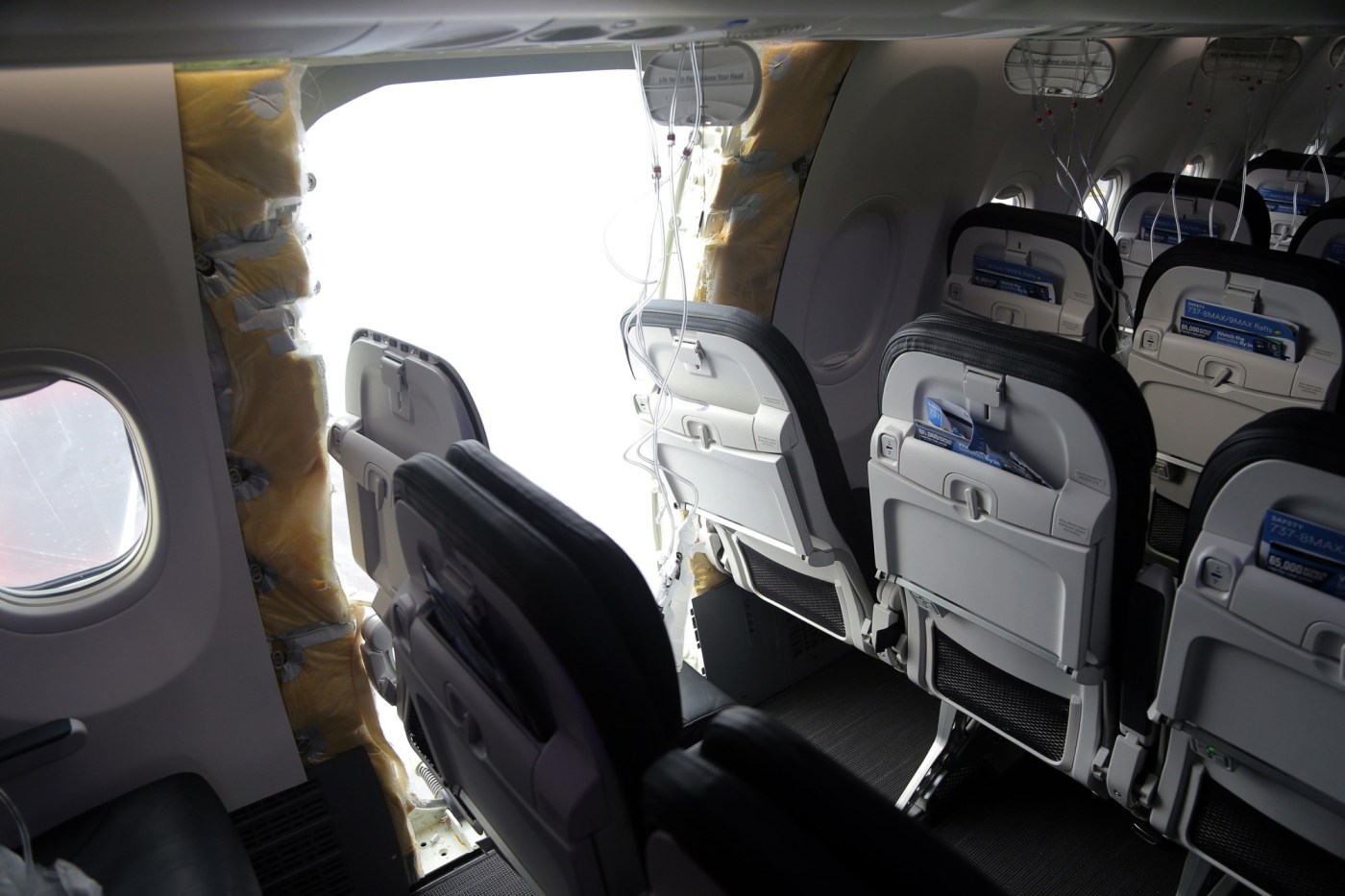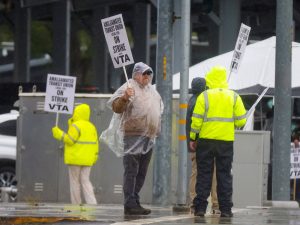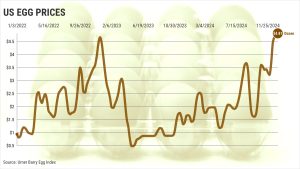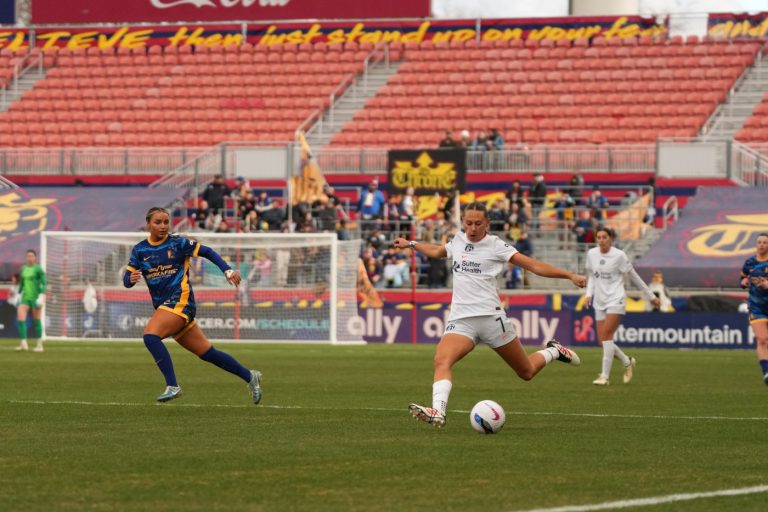Lauren Rosenblatt | (TNS) The Seattle Times
A year after a panel blew off a 737 Max midflight, Boeing says mistakes like those leading up to the near-disaster on Jan. 5, 2024, won’t happen again.
The company has increased inspections, created new procedures to make sure airplane parts and airplane work are documented, and, it says, recommitted itself to the quality and safety of the planes it makes.
Boeing is entering the new year with a new CEO, a new contract with its unionized Machinists workforce and a new plan to focus on quality and safety. But, the company and the Federal Aviation Administration, the agency charged with overseeing Boeing, aren’t out of regulatory hot water as many wonder if Boeing’s factories will see lasting change.
FAA Administrator Mike Whitaker said Friday that Boeing’s changes and the agency’s oversight are “not a one-year project.”
“What’s needed is a fundamental cultural shift,” Whitaker wrote in a blog. “That will require sustained effort and commitment from Boeing, and unwavering scrutiny on our part.”
Industry insiders expect Boeing to pull through, but they say 2025 is a crucial year for the aerospace manufacturer.
Boeing has yet to fully ramp up production of its Renton-built 737 Max plane, and the FAA still caps that rate of 38 planes per month. For comparison, Boeing delivered 45 Max planes in November 2023 and just nine in November 2024. The company remains on the cusp of a credit rating downgrade, which would make it even more difficult to borrow money. And, it faces regulatory scrutiny.
The FAA opened a second audit into Boeing’s production systems in October, and the National Transportation Safety Board’s investigation into the blowout is ongoing. The FBI is also investigating potential criminal negligence leading up to the blowout and has issued subpoenas using a Seattle grand jury.
All seven people who spoke to The Seattle Times for this story — professors, analysts and attorneys — had one main takeaway: The panel blowout was not a fluke.
Systemic issues at Boeing’s factories contributed greatly, according to those who watch the company closely. Now, Boeing has to claw back its reputation, public trust and regulatory standing, and it might take more than a year, the experts said.
“It’s a lot harder to restore and bring back up a brand, than to take it down,” said Mathew Isaac, a business professor from Seattle University. Boeing has “been really known for many years for their attention to detail. … That’s where they have lost their way.”
A year of issues
Ben Tsocanos, an analyst with S&P Global Ratings, spent 2024 watching as Boeing’s year just kept getting worse.
At the start of the year, S&P Global had predicted Boeing would generate cash in 2024 as it ramped up Max production. By December, Tsocanos said he expected Boeing would lose money after a year of stalled production, safety concerns and regulatory intervention.
An optimistic outlook for the year all but disappeared on Jan. 5, when a panel blew off a Boeing 737 Max 9 plane shortly after it took off from Portland, Ore.
The panel, known as a door plug, had been mis-attached at Boeing’s Renton factory months before. Investigations into the blowout “uncovered a fairly widespread shortcoming in quality control,” Tsocanos said.
The door plug blowout was only the beginning. During the months that followed, Boeing was repeatedly taken to task by the FAA, which itself did not escape blame for its oversight of the aerospace giant. Regulators inspected Boeing’s manufacturing processes and experts analyzed its safety culture. Concerns about quality control or manufacturing reached Boeing’s 737 Max, 787 Dreamliner and newest airplane model 777X.
Outside of its commercial business, Boeing’s space division took a hit when the company’s Starliner capsule left two astronauts in space amid concerns about a safe return. Its defense business struggled with high costs from fixed price contracts and a lack of next-generation weapons systems.
“They had some stumbling blocks throughout the business,” said Jeff Windau, an analyst with the investment company Edward Jones. “It just seemed like you’d start down the path … and then another one of these items cropped up.”
Phillip Ansell, an aerospace engineering professor and director of the Center for Sustainable Aviation at the University of Illinois Urbana-Champaign, said: “There’s been shoe after shoe falling. It’s not just a pair.”
Hopes high for new CEO
In the months after the blowout, Boeing ousted many of its top leaders, including the head of the 737 Max program, the head of Commercial Airplanes and the chief executive of Boeing overall.
Dave Calhoun, who took over as CEO in 2020 in the wake of two fatal Max crashes, announced in March he would step down by the end of the year. Boeing board chair Larry Kellner also will not seek reelection.
Later in the year, Ted Colbert, chief of Boeing’s space and defense business, stepped down, as did Elizabeth Lund, the company’s head of quality for commercial airplanes. Lund had taken the brunt of questioning and scrutiny for Boeing at a two-day NTSB hearing about the blowout.
Kelly Ortberg, the former chief executive of Iowa-based avionics supplier Rockwell Collins, took over as Boeing CEO in August. Many industry-watchers saw his appointment as a sign Boeing was focusing on production, with an engineer at the helm.
Since taking charge, Ortberg has said Boeing is going to cut costs, reduce inefficiencies and focus on what it does best: build airplanes.
Isaac, from Seattle University, expects Ortberg’s “roll up our sleeves and get back to work” mentality and his acknowledgment of Boeing’s shortcomings will work.
The first step to restore a reputation, Isaac said, is “commit to being upfront and explaining what will happen” in the future. “They have to be very transparent … about how things are different now.”
On Friday, Boeing said it is “on track” with the quality-improvement plan it submitted to the FAA earlier this year, outlining a series of changes it planned to make to improve work processes and safety in its factories.
Boeing conducted mandatory safety and quality training for all employees, and enrolled more than 2,500 workers in its hands-on training center. It improved an anonymous channel for employees to report safety concerns and it addressed more than 70% of “action items” employees submitted during a pause in production after the blowout.
On the production side, Boeing says it improved procedures to better track work, parts and equipment as planes move through the factory. It simplified 737 installation plans, introduced a new system to follow incomplete work, and started random audits to ensure employees are properly documenting the removal of parts.
The process for documenting removals and keeping track of incomplete work, or traveled work as Boeing calls it, became particularly important in the wake of the blowout. Boeing acknowledged it did not have a record of the door plug being removed, making it difficult to determine what went wrong. Without that documentation, the plane left the factory without the panel being properly reinstalled.
Boeing says it’s not done yet. It “will continue to implement improvements … in the new year,” the company said Friday.
The Max crashes linger
The blowout occurred as Boeing was still recovering from disaster.
In 2018 and 2019, two Max planes crashed in Indonesia and Ethiopia, killing 346 people and leaving many wondering if Boeing’s planes were safe.
Though the causes of the Max crashes and the door plug blowout were distinct — one was an engineering issue, the other a manufacturing mistake — Ansell, from the University of Illinois, said they point to the same underlying problem at Boeing: Moving too fast.
“If you try to go fast, mistakes will happen,” Ansell said.
Consumers are generally willing to forgive an isolated incident, said Isaac, from Seattle University. The January blowout was so detrimental because it reminded so many of the deadly Max crashes.
At the start of 2024, many expected the Max crashes to be mostly resolved.
Boeing had settled many of the lawsuits and an oversight agreement with the Department of Justice was set to expire.
Instead, the Justice Department found in May that Boeing had violated the agreement and the company pleaded guilty in July to a criminal fraud charge, part of a new agreement with the government. A Texas judge rejected that deal in December and sent both parties back to the drawing table to craft a new plea deal, dragging proceedings into the new year.
Boeing continues to face ongoing legal action from passengers on Flight 1282, the Alaska Airlines flight that experienced the blowout
Daniel Laurence, an attorney with the Seattle-based Stritmatter law firm who is representing some of those passengers, said the discovery process in those cases “will definitively expose the systemic flaws that led to this terrifying, nearly fatal disaster.”
Payback for Machinists
Even before the blowout, Boeing braced for strife on the factory floor.
The company’s contract with its unionized Machinists workforce in the Puget Sound region — where it builds the 737, 767, 777 and 777X — was set to expire in September. Boeing and the Machinists would bargain a new contract for the first time in 16 years.
In those years, Machinists’ wages had not kept up with the massive jump in cost of living in the region, and the workforce still held a grudge after Boeing twice threatened to take production to its nonunion factory in South Carolina, resulting in a vote to end the Machinists’ pension plan.
Machinists walked off the job in September, idling Boeing’s factories. They returned 53 days later in November, and Boeing restarted production the next month .
FAA administrator Whitaker said the slow restart was a good sign. It meant Boeing was taking its commitment to safety and quality seriously as it retrained some workers, and made sure all of its equipment and parts were ready for a full ramp up.
Now, much of Boeing’s recovery hinges on its ability to sustain that ramp up and focus on safety.
Related Articles
‘Normal’ egg prices months away, analyst says
US dockworkers threaten to strike against automation, creating economic uncertainty
The Girl Scouts are retiring two cookie flavors after this season
Purchase of top-notch East Bay office building looms at huge price cut
Gunnar Optiks reveals new lenses and gaming-themed frames at CES
Najmedin Meshkati, an engineering professor at the University of Southern California, who sat on an expert panel convened by the FAA to study Boeing’s safety culture, said he was pleased to see Boeing slow down to focus on quality.
But he is not yet confident that is a lasting change. Though Boeing has said it will take the panel’s recommendations “to heart” and “act on their findings and feedback,” Meshkati wanted to see Boeing commit further and assign an executive to oversee progress on each of the FAA expert panel’s 53 recommendations. On Friday, Boeing said it had hired a human factors chief engineer, following one of those recommendations.
“They need to respond and implement our recommendations,” Meshkati said. “They need to fix their safety culture, which has been the foundational problem at Boeing.”
A Catch-22
In November and December, Boeing laid off roughly 4,000 workers as it began a restructuring effort to focus on the core areas of its business, according to CEO Ortberg.
In December, Boeing won a $36 billion order from Pegasus Airlines in Turkey, beating out competitor Airbus in a much-needed boost after the strike and year of safety concerns. The company also said it was investing $1 billion in its 787 program in South Carolina, outlining a plan to produce 10 planes per month by 2026. In the third quarter of 2024, Boeing was producing 4 787s per month.
Windau, the analyst from Edward Jones, said Boeing has all the building blocks in place for a recovery this year. But economic factors out of their control, like President-elect Donald Trump’s plan to impose tariffs and trade restrictions, could add costs as Boeing struggles to regain financial footing.
Separately, if there is another safety incident, it won’t blow over.
“I think 2025 is probably a pretty pivotal year,” Windau said. “If there’s some type of issue that comes up, or other headwinds … then you might start to see customers evaluate their options.” Options like Airbus.
In December, a Jeju Air Boeing 737-800 crashed in South Korea, killing 179 people on board. The cause of the crash remains unclear, as officials are investigating the possibility of a bird strike leading to a landing gear malfunction, as well as the placement of a concrete structure at the end of the runway. The 737-800, a precursor to the Max, is regarded as one of the safest planes ever built.
Ansell, from the University of Illinois, said Boeing was in a “Catch-22” after its year.
In his opinion, the best way for it to recover from the past year would be to build a completely new plane. That would renew interest and generate orders, and therefore, a bunch of money.
But to create said plane, Boeing needs a lot more cash than it has on hand.
He sees the blowout as a drain on the entire aerospace industry, not just Boeing.
Because Boeing doesn’t have the money to innovate, Ansell said, its rivals don’t need to compete. At the same time, slowdowns at Boeing slow the entire aerospace supply chain, leaving Boeing and its competitors lagging.
“Boeing is a very important part of the economy,” Ansell said. “I really do hope they get this figured out, but it’s going to be a tough and challenging process.”
Boeing’s rough 2024
January: A door-size panel blows out of a Boeing 737 Max 9, prompting the FAA to ground the type for inspection.
February: An expert panel convened by the FAA before the door plug blowout, found Boeing’s safety culture was lacking and had not taken hold at all levels of the company. Employees were not sure how to participate in the company’s safety processes, the panel found, and were fearful of retaliation if they spoke up.
March: An FAA audit finds multiple instances where Boeing did not meet quality control requirements. The agency also ordered Boeing to fix a separate issue on the 737 Max plane related to the engine’s anti-ice system.
May: The FAA opens an inspection into the 787 Dreamliner in South Carolina after Boeing disclosed employees had falsified inspection records.
June: Boeing announces it would acquire Spirit AeroSystems, a supplier that makes the fuselage for the MAX planes before sending it to Renton.
August: Boeing stops test flights of its newest aircraft, the 777X, just one month after beginning because it discovered an issue with an engine component. Boeing CEO Kelly Ortberg later said Boeing would delay the rollout of the 777X until at least 2026.
October: The Transportation Department’s inspector general finds the FAA did not have an effective system for overseeing Boeing’s factories, prompting the FAA to open yet another review of Boeing’s safety practices.
©2025 The Seattle Times. Visit seattletimes.com. Distributed by Tribune Content Agency, LLC.












